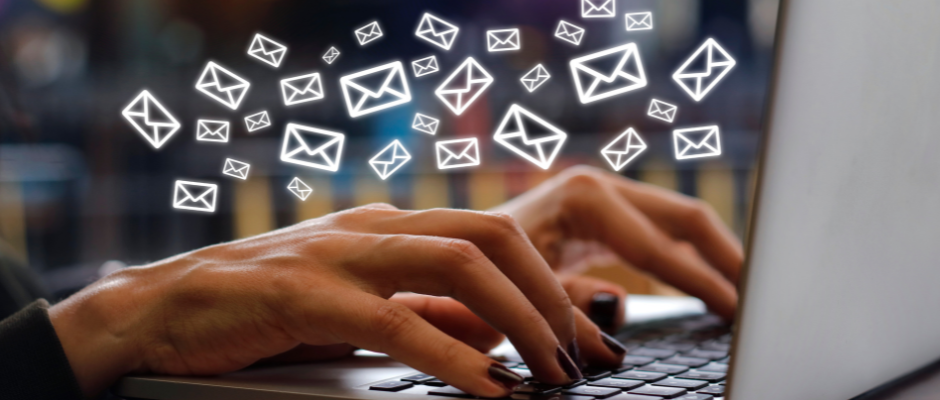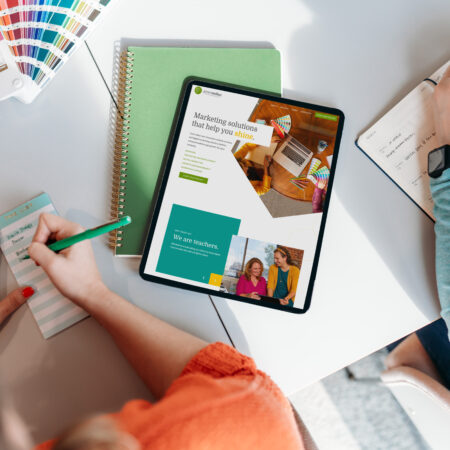These days, attention spans are fleeting, and inboxes are overflowing. So it’s even more crucial to stand out from the crowd and captivate your audience. But that is easier said than done—how can you cut through the noise, especially using email marketing?
Here are our five tips for creating an eye-catching email newsletter that delivers results:
1. Create a Compelling Subject Line
The subject line is your first point of interaction with your audience—meaning that if you do not have something eye-catching here, chances are your email will get deleted without even a second glance. You’d rather have them unsubscribe than ignore you. Your goal is to grab their attention and pique their curiosity.
One way you can do this is by using personalization with names or locations—depending on your platform capabilities. Another way is to use descriptive words, such as ‘the hottest deal of the summer’. Keep this direct and descriptive—the last thing you want is to try to be too trendy and miss the mark. Your subject line should also always be short (and sweet).
Remember, people are likely seeing these on their mobile devices, so seeing the whole line at a glance is imperative. You should also limit punctuation—if your subject line is concise, this will not be an issue. Lastly, use some emojis to add a little pizzazz! But limit it to one or two—again, short and sweet is the end game here.
Pro Tip: Platforms such as MailChimp offer a way to test your subject line! Their subject line helper provides helpful tips and suggestions to make your subject line most effective.
2. Craft Captivating Content
Now that you have captured your audience’s attention enough to get them to open the email, you need to keep it with engaging content that speaks directly to their interests and needs.
Share your expertise, insights, and team updates that add genuine value to their lives. You should also consider tone as you build your content—does your brand voice match your brand strategy? If you are light and conversational on social media and your website, then your newsletter should have that same voice.
Just like with your subject line, keep the information you share short and sweet. You want your content to be easy to digest—for that to be the case, break your content up into sections (kinda like what we did here). Make sure each segment has a subheader so that your audience can skim your content and find what they’re looking for.
Pro Tip: Remember, the goal is to provide valuable information efficiently while leaving readers hungry for more.
3. Engage with Eye Visuals
Another way to catch and engage your audience is by including images in your email. Incorporate relevant photos, infographics, or short videos that enhance your message and add visual appeal. When used correctly, images have the power to reinforce your brand, evoke emotions, and leave a lasting impact on your readers.
It has also been scientifically proven that the human brain processes images 60,000 times faster than text, and 90% of information transmitted to the brain is visual. Think about it this way, we are visual beings in our day-to-day so this has become one of the most effective ways for someone to process information quickly.
Pro Tip: Share images of your team! People subscribe to your newsletter because they are interested in you and what you have to say. But ultimately, it is nice to have the reminder that businesses are human, too—sharing your team images and updates does just that!
4. Create A Call-To-Action (CTA)
Now your email is aesthetically appealing, and your content is engaging. Your audience is reading what you have to say—but where do your readers go from here? Cue the call to action!
An effective email newsletter prompts your subscribers to take action. Whether it’s clicking a link to read a blog post, signing up for a workshop, or even making a purchase, your CTA should be clear, compelling, and strategically placed within the email. We recommend a button at the end of each segment pointing your audience in the direction of the content that they were engaging with.
Pro Tip: You can even add a click-through link to your photos to make it easy for readers to engage with your content and guide them toward your desired action.
5. Test and Test Again
Building a successful email newsletter isn’t a one-and-done task—it requires constant fine-tuning. To find success, you should experiment with different subject lines, content formats, and CTAs to understand what resonates best with your audience.
Regularly analyze key metrics such as open rates, click-through rates, and conversion rates to identify areas for improvement. By taking this data-driven approach, you can optimize your newsletter and achieve better results with each iteration.
Pro Tip: Test out who you are sending your emails from—for example, you can say it was sent from the business directly (Ex: GreenMellen Media) or from the business owner/lead decision maker in the process (Ex: Mickey Mellen).
Now You’re Ready To Send Better Email Newsletters
Congratulations! By following these guidelines, you are equipped to create an email that grabs attention, engages readers, and ultimately drives action.
Remember that consistency and quality are key to building a loyal (and legit) subscriber base. By continuously delivering valuable content and optimizing your approach based on insights, your email newsletter will become a powerful tool for cultivating lasting relationships with your audience.
If there is anything else you want to know about creating an eye-catching newsletter that delivers results, you can chat with the GreenMellen team here. Or subscribe to our monthly newsletter for an example of all these tips in action.





